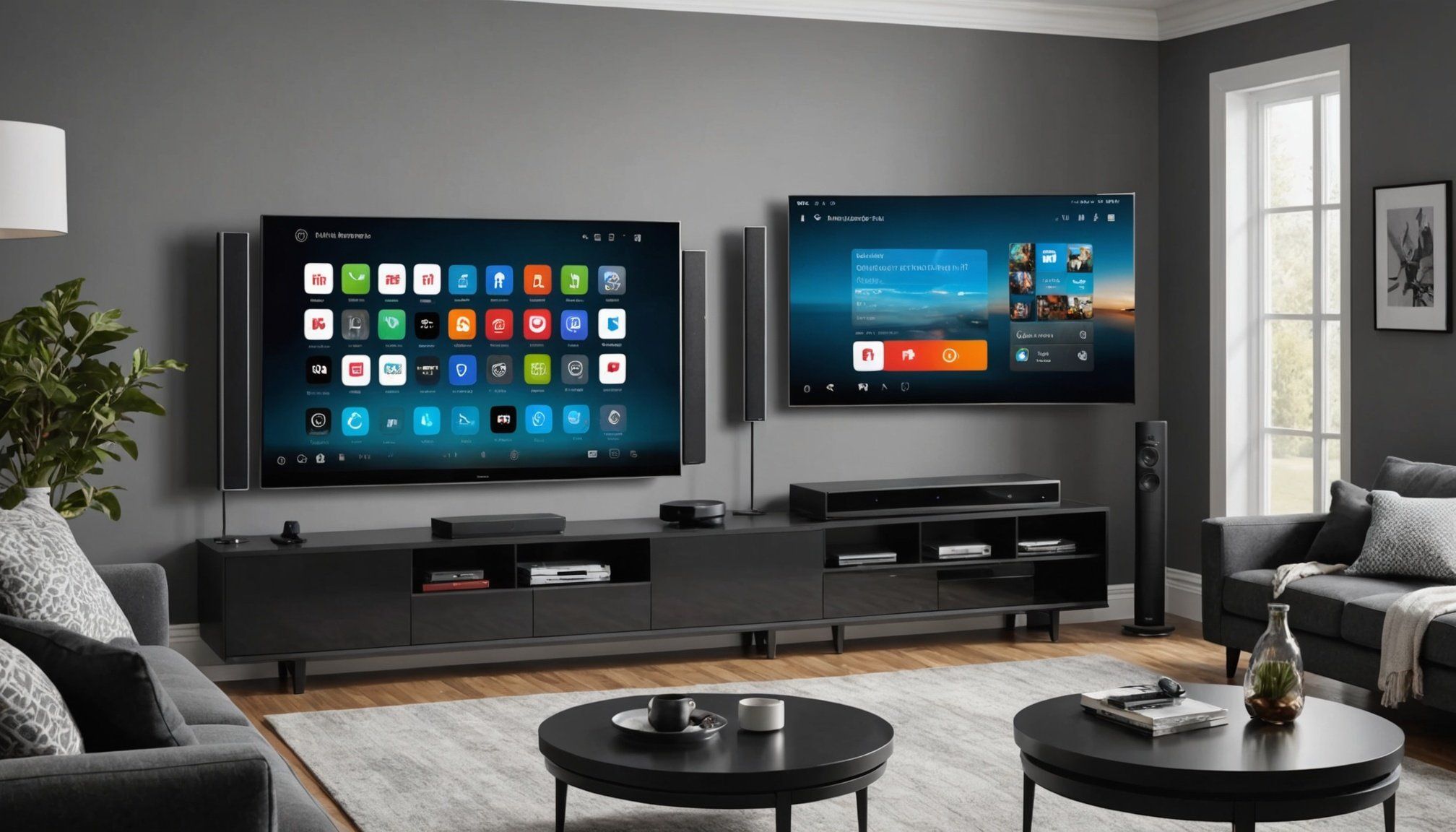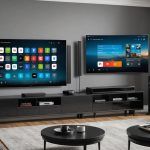Overview of Smartphone Integration in Smart Home Entertainment
In recent years, the role of smartphone integration in smart home technology has expanded dramatically, turning phones into powerful entertainment hubs. Smartphones have evolved beyond mere communication devices to act as command centres for home automation. Thanks to their versatility and connectivity, smartphones can control everything from smart TVs and speakers to lighting and thermostats, enabling seamless interaction with various systems.
Utilizing your smartphone as a central entertainment device offers several key benefits. Firstly, it provides convenience as it integrates multiple controls in one portable gadget, eliminating the need for multiple remotes or interfaces. Secondly, smartphones enhance the user experience with intuitive apps that often support voice commands, bringing an added level of ease and sophistication to everyday tasks.
Topic to read : Unlocking your smartphone”s potential: the ultimate guide to creating and managing customized smart home routines
Smartphone integration is compatible with a wide array of smart home systems and devices. Platforms such as Google Home, Amazon Alexa, and Apple’s HomeKit are designed to pair effortlessly with smartphones, offering compatibility with thousands of third-party devices. This integration allows users to customize their entertainment settings with precision, enhancing their overall experience.
To fully take advantage of smartphone integration in home entertainment, consider exploring these options to elevate your smart home setup.
Also read : Harnessing ai-powered mobile applications for innovative mental health tracking and support
Essential Apps for Smart Home Management
Managing a smart home efficiently requires the right home management apps designed for smart device control and seamless automation. Many users find these apps invaluable for maintaining control over their devices and enhancing their home’s functionality.
Recommended Apps for Seamless Integration
When selecting automation apps, it’s essential to consider those that offer robust features for easy integration across different devices. Apps like SmartThings and Home Assistant are renowned for their adaptability. They allow users to connect various gadgets, creating a cohesive network in the home. Users frequently laud these apps for simplifying complex smart environments.
Features to Look for in Smart Home Apps
Key features in home management apps include compatibility with a wide range of devices, user-friendly interfaces, and reliable automation capabilities. Look for apps that support voice commands, real-time alerts, and scheduling flexibility. These features enhance user convenience, allowing for efficient and autonomous smart device control.
User Reviews and Insights
Feedback from users often highlights the importance of stability and customer support in automation apps. Apps with frequent updates and responsive support teams generally score higher in user satisfaction ratings. Reviews emphasize how apps streamline daily routines, enhancing comfort and security within the home environment.
Step-by-Step Guide to Setting Up Your Smartphone as a Hub
Setting up your smartphone as a hub is a great way to centralize control over your smart home devices. It begins with ensuring you have completed the preliminary requirements necessary for an effective integration. First, ensure your smartphone has the latest operating system update and a reliable internet connection. It’s crucial for seamless mobile hub configuration.
Next, let’s explore the detailed setup process for popular smart home devices. Begin by downloading the corresponding app for your smart home gadgets. Apps like Google Home or Apple HomeKit are compatible with many devices. Open the app and start the device pairing process. Usually, the app will guide you through finding and connecting to your devices within the home.
If you encounter problems during setup, don’t worry. Here are some troubleshooting tips for common setup issues:
- Ensure that you have the correct app for your specific device.
- Verify that Bluetooth or Wi-Fi connections are active on your phone.
- Restart both the smartphone and the smart device if they don’t initially connect.
By following this setup guide, your phone can become a central hub, facilitating effective management of your smart home environment.
Enhancing User Experience with Smart Home Features
Creating a seamless user experience with smart home technologies is all about personalization and entertainment enhancement.
Music and Video Streaming Options
Smart homes offer a variety of music and video streaming options that cater to the user’s preferences. Platforms like Spotify, Apple Music, and Netflix are easily integrated, providing a personalized entertainment experience. With voice assistants like Alexa or Google Assistant, users can request specific artists, albums, or movies. This interaction is not just convenient; it’s a testament to how personalization enhances the user experience.
Smart Controls for Lighting and Ambiance
Smart controls for lighting and ambiance add another layer of personalization. Lighting systems like Philips Hue allow users to adjust brightness and colour to suit their mood, enhancing both relaxation and productivity. Integration with voice assistants further simplifies control, offering a seamless way to manage the ambiance of any room with simple voice commands.
Voice Assistants and Smart Home Interaction
Voice assistants play a pivotal role in smart home interaction. By understanding user commands, these devices improve the overall user experience. From setting reminders to controlling home devices, voice assistants like Siri and Alexa allow for an interactive and hands-free experience, making smart home management intuitive and engaging.
Benefits of Using a Smartphone as an Entertainment Hub
Incorporating a smartphone as an entertainment hub presents a multitude of advantages. Centralized management of entertainment devices through a smartphone offers impressive cost-effectiveness. There’s no longer a need to invest in separate remote controllers or individual device management systems. With just one device in hand, users can easily transition between managing their television, sound system, and even smart home gadgets.
Improved accessibility is another significant benefit. Every family member can effortlessly navigate entertainment options, regardless of their technical expertise. This increased accessibility means less time troubleshooting, and more time enjoying favourite shows or playlists. Smartphones often come equipped with intuitive apps that simplify device interaction for users of all ages.
Moreover, these apps enable versatile usage of your smartphone, accommodating a wide range of functionalities beyond just entertainment control. Users can delve into personalisation, crafting a setup that ideally matches their preferences. Features such as voice command, location-based triggers, and adaptive interfaces ensure a tailored experience. This flexibility transforms the smartphone from a simple gadget into a powerful central hub for entertainment.
In sum, smartphones make entertainment management more convenient, customisable, and connected, empowering users to craft their perfect media experience without unnecessary expenses.
Case Studies and User Testimonials
Exploring customer experiences and hearing firsthand success stories can be incredibly enlightening for anyone considering a new purchase. Whether you’re curious about product performance or seeking practical user insights, learning from others is often invaluable.
Case Study: Transforming a Living Room with a Smartphone Hub
Imagine a space where your smartphone is the ultimate controller. One user’s success story involves integrating a smartphone hub to seamlessly control all living room devices. From lights to entertainment systems, the hub transformed their lifestyle. The convenience of managing multiple devices through a single point was unparalleled, turning routine actions into a cohesive, manageable task.
Testimonials from Users on Functionality and Convenience
User reviews often highlight the functionality and convenience of modern solutions. Many rave about the enhanced efficiency and how these devices contribute to everyday ease. Statements from satisfied individuals frequently mention how adopting such technologies has streamlined their routines, offering both time-saving and practical benefits.
Common Challenges Faced by Users and How They Overcame Them
Adopting new technology can come with its set of challenges. Users sometimes mention initial difficulties in setup or device compatibility. However, these issues are generally overcome by consulting user guides or support forums. With practice and access to helpful resources, overcoming these initial hurdles is achievable for most.
Future Trends in Smart Home Entertainment Integration
The future of smart homes is set to evolve with incredible speed, driven by emerging technologies and dynamic industry trends. One major component shaping this landscape is the integration of artificial intelligence (AI) and machine learning in home entertainment systems. These technologies promise to make devices smarter, creating more personalized user experiences by learning from user preferences and behaviors.
Imagine a system that can automatically suggest content based on your previous choices or adjust ambient lighting and sound settings for optimal viewing. These advancements, facilitated by AI, are at the forefront of enhancing how we consume entertainment.
Moreover, the future of smart homes will likely see smartphones becoming even more central to smart home operations. As devices become more powerful, they may serve as universal remotes, hubs for controlling home entertainment systems, or even as sensory controllers that adapt to the user’s surroundings.
Industry trends also hint at the seamless integration of various smart devices, where consumers can expect increasing compatibility and communication between different brands and technologies.
This next wave of emerging technologies will redefine our living spaces, offering new possibilities and conveniences for modern lifestyles, marking an exciting and transformative era in smart home innovation.










